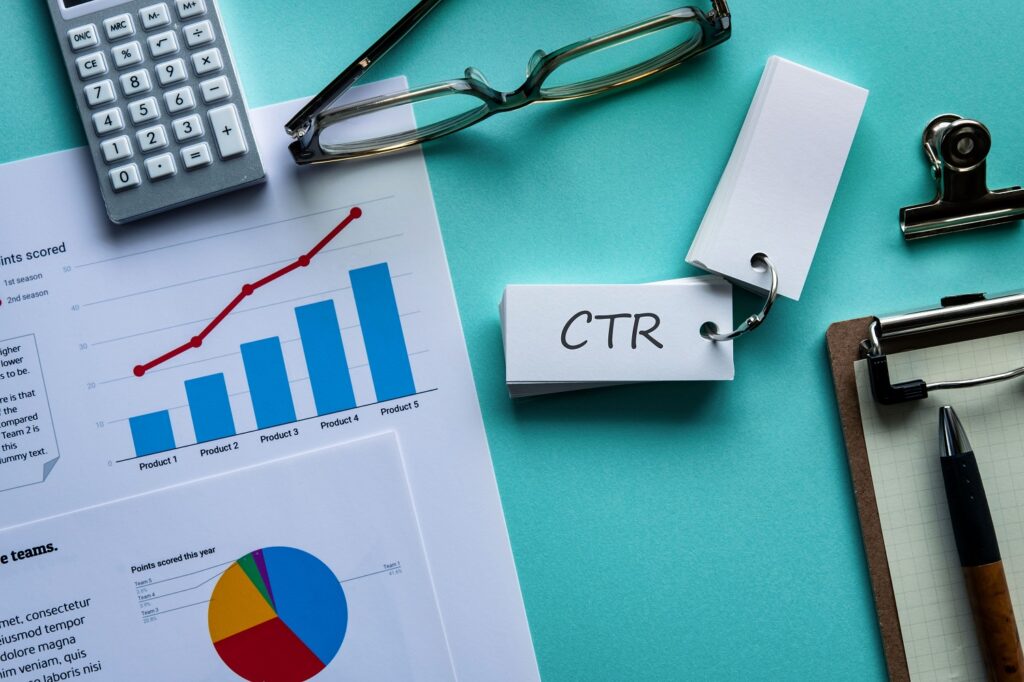How Much To Spend On Amazon PPC (2024 Guide)

How much do you spend on your Amazon PPC advertising strategy? You don’t want to spend too much, and it ends up not being cost-effective. You also don’t want to spend too little, and you get no benefit out of it. That’s why we’ve put together this guide to help you determine how much to spend on Amazon PPC.
Let’s get started.
Understanding Amazon PPC advertising
Amazon PPC (Pay-Per-Click) advertising is a marketing strategy that allows sellers in the online marketplace to get their listings seen more and ultimately sell more products. As a seller yourself, you’ll pay for an Amazon PPC ad that appears throughout the website, whether in the search results for your product or on specific product detail pages. It helps gain the attention of shoppers who are looking for what you’re selling and puts you above the competition.
There are three main types of Amazon PPC ads:
- Sponsored products: These PPC ads will pop up throughout the search results and on product detail pages when customers are looking for the type of product you’re selling. They tend to be keyword-targeted and help you boost visibility for specific items on your account.
- Sponsored brands (previously known as Headline Search Ads): These ads are designed in a more specific way. You’ll input your own headline and logo and then place a number of your products in the ad, too. Customers will see a sponsored brand ad above the search results. It helps customers see not just one product but many at the same time.
- Sponsored display: While the past two types of PPC ads are only seen on Amazon, these are displayed on and off the platform. It helps target a wider range of audiences based on their interests, behaviours, and shopping habits.
We mentioned keyword-targeting in the sponsored products description, but you can also target on Amazon in other ways, such as product and audience targeting. You may also choose from different bidding strategies when setting up an ad, such as automatic targeting, manual targeting, and dynamic bidding, based on your goals and budget.
PPC advertising involves competing for the ad placement for your products on Amazon against other sellers. You’ll need to set a maximum bid (the most you’re willing to pay for a click on your ad), and then the platform will rank your ad against competitors, with those willing to pay more often being placed higher up. You then pay for each click on your ad until you use up your budget.

Factors to consider when setting Amazon PPC budget
If we all could, we’d place our bid as high as possible and more than all other sellers on Amazon. However, this isn’t always realistic or cost-effective, so there are a few main factors you need to consider when setting your Amazon PPC budget.
Advertising goals
The first thing you need to consider is your advertising goals. For example, if your main goal is to increase sales from your ads, then you might want to consider setting a larger bid to increase your chances of bringing in more traffic and purchases. On the other hand, if you are looking at focusing on profitability more than the number of sales, you’ll want to balance how much you spend on your ads. You can calculate your profit margin to ensure that you are spending the right amount on your PPC campaigns while remaining profitable.
Some other advertising goals that might affect how much you spend include things like brand awareness, product launches, or seasonal trends. If you want to simply increase attention to your brand and get people talking about it, then it’s best to place the majority of your bids on sponsored brand ads.
For product launches, you might want to adjust your budget a bit higher for a particular product for a short amount of time. You can do the same for seasonal trends, adjusting your budget as your products become more in demand throughout the year.
Product profitability
We briefly mentioned product profitability as an advertising goal, and that’s because it’s incredibly important when setting an Amazon PPC budget. You want to ensure that you aren’t spending too much on your ads that it is taking away from how much profit you make when selling products. You can do this by evaluating the profit margins of your products and using this to determine how much you can spend on each bid. If your products have a larger profit margin, you can place more in your PPC budget.
You can also help determine your spending amount by calculating the Advertising Cost of Sales (ACoS), which we will go into later on.
Other factors to consider when looking at setting bids based on product profitability include product performance and the competitive landscape. By analysing the past performance of your products in terms of sales and conversion rates based on previous PPC ad campaigns, you can figure out which products have a better track record of profitability, and therefore, you can allocate more of your budget to these products. You should also look at how competitive your product category is. With more competition, you need to set higher bids to help gain more visibility for your own product.

Competition analysis
We just briefly touched upon how the competitive landscape of your product can affect how much you spend on your PPC ads. This is because when there are a lot of products to compete against, you need to adjust your budget to stand out in the crowd.
The best way to determine your budget in terms of competition is to assess the level of competition in your product category. You can find the top competitors you’ll be going against and then look at how they’re advertising their products. Analyse their ad placements, the types of ads they’re running, and their messaging. You can then look at what’s working and what isn’t working for them and adjust your own campaign to help put yourself ahead of them.
It’s also good to understand the bid prices for relevant keywords in your product niche. Higher competition means you’ll have to pay more, and the same works vice versa. You should also understand where competitor’s ads are being displayed. For example, if more of them are appearing on search results pages, you want to change your own campaign and advertise in places where they aren’t.
Factors affecting your Amazon PPC spend
After looking at the factors to consider when setting a budget, you also need to look at which factors will directly affect how much you spend.
Advertising Cost of Sales (ACoS)
The Advertising Cost of Sales (ACoS) is a metric that directly influences how much you spend on your Amazon PPC ads. This is because it measures how effective each of your campaigns is. When you have a lower ACoS, then that means you’re spending an efficient amount of your budget and it’s balancing out with profitability. However, when you’ve got a higher ACoS, that suggests you’re spending a much larger portion of your revenue on advertising, so you might not be earning as much from sales.
You can calculate your ACoS by dividing your total ad spend by your total sales. You should then multiply this number by 100. Your total ad spend is all the money you’ve spend on Amazon PPC campaigns throughout a specific timeframe. Your total sales are the total revenue you’ve generated from the products advertised through these PPC ads.
Factors that affect your ACoS include keyword selection, bid prices, ad relevance, and product pricing. And then the ACoS can directly affect how much budget you allocate, the bidding strategies you use, and how you optimise your campaigns.
By constantly monitoring and managing your ACoS, it allows you to adjust your PPC ads to maintain profitability, increase your visibility, and ensure you become more successful on Amazon.
Click-through rate (CTR)
The click-through rate of your Amazon PPC ads is another factor that will affect how much you spend. A higher CTR tells you that your ads resonate well with potential customers and attract more clicks to your products based on how many impressions they get. When you have a higher CTR, you tend to get better ad placements without having to spend as much, meaning you receive better profitability.
You can calculate your CTR by dividing your total clicks by your total impressions. You should then multiply this number by 100. The total clicks refers to the total number of times users have clicked on your ads throughout a specific timeframe. The total impressions equate to how many times your ad was displayed to shoppers within the same timeframe.
Monitoring your CTR can help you see how relevant your keywords are to your targeted audience. It can then help you identify which ones are performing the best and help you reallocate your budget towards the PPC campaigns with higher CTR, ultimately helping you improve your tactics and drive better results.

Calculating your Amazon PPC budget
After going through all the considerations mentioned above, it’s time to calculate your ideal Amazon PPC budget. You can do so by following the steps below:
Define your advertising goals
Determine your objectives for running Amazon PPC campaigns. Are you aiming to increase sales, drive brand awareness, or launch new products? Clarifying your goals will guide your budgeting decisions.
Calculate target ACoS
Figure out your target Advertising Cost of Sales (ACoS), representing the percentage of sales revenue spent on advertising. Your target ACoS should align with your profitability goals and overall business objectives.
Estimate average cost-per-click (CPC)
Research relevant keywords for your products and estimate the average cost-per-click (CPC) using tools like Amazon’s keyword planner or historical campaign data. This helps you understand the potential cost of advertising in your niche.
Forecast click-through rate (CTR)
Estimate your ads’ click-through rate (CTR) based on historical data or industry benchmarks. CTR influences your ad’s performance and helps determine how many clicks you can expect per impression.
Calculate estimated clicks and sales
Multiply your estimated CTR by the number of impressions your ads will receive to calculate the expected number of clicks. Then, apply your conversion rate to estimate the sales generated from those clicks.
Determine maximum ad spend
Multiply your target CPC’s estimated number of clicks to determine the maximum ad spend required to achieve your sales goals. This represents the maximum amount you will spend on advertising to reach your objectives.
Set daily and monthly budgets
Divide your maximum ad spend by the duration of your campaign (in days or months) to establish daily and monthly budget caps. These caps help control your advertising expenses and ensure you stay within budget constraints.
Monitor and adjust
Continuously monitor the performance of your campaigns and adjust your budget allocation as needed based on key metrics such as ACoS, conversion rate, and return on investment (ROI). Allocate more budget to well-performing campaigns and optimise underperforming ones to maximise results.

Conclusion
PPC ads can make a seller thrive on Amazon, but they need to know how much to spend and the right strategies to put them ahead of the competition. By following the steps above, you should be able to spend the right amount, place relevant bids, and increase your profitability on each of your products.
For more help with increasing your visibility on Amazon and enhancing your PPC ads, Mercatus is here to help. We are the experts when it comes to Amazon advertising. Simply get in touch with us for a free consultation today.


